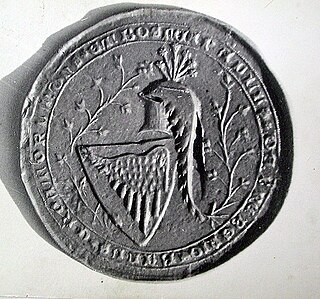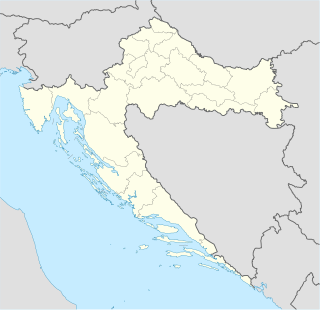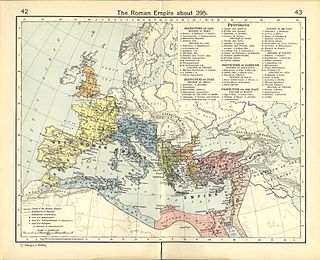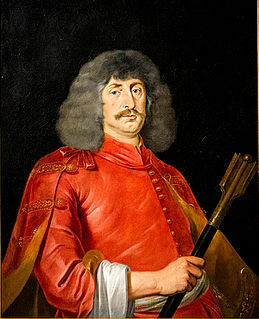See also
- Zrinski, a Croatian-Hungarian noble family
| This disambiguation page lists articles associated with the title Zrin. If an internal link led you here, you may wish to change the link to point directly to the intended article. |
Zrin is a village in Sisak-Moslavina county, Croatia
Zrin may also refer to:
| This disambiguation page lists articles associated with the title Zrin. If an internal link led you here, you may wish to change the link to point directly to the intended article. |

The Šubić family were one of the twelve tribes and a great noble house which constituted Croatian statehood in the Middle Ages. They held the county of Bribir (Varvaria) in inland Dalmatia.

Zrinski was a Croatian-Hungarian noble family, influential during the period in history marked by the Ottoman wars in Europe in the Kingdom of Hungary and Croatia and in the later Austro-Hungarian Empire. Notable members of this family were Bans of Croatia, considered national heroes in both Croatia and Hungary, and were particularly celebrated during the period of romanticism; this movement was called Zrinijada in Croatian.

Novi Zrin was a fortress of the Zrinski noble family built near the Donja Dubrava village in the northernmost part of Croatia on the mouth of river Mura into Drava between 1661 and 1664.

Legrad is a municipality in northern Croatia, located north of Koprivnica and east of Ludbreg in the Koprivnica–Križevci County. There are 2,241 inhabitants in the municipality, absolute majority of which are Croats at 97.4%, with the largest minority being Romani at 1% of the municipality. Beside the Roman Catholic majority, there are authentic Hungarian and Croatian Lutherans that have a tradition beginning in the 16th century.
Baron Pierre Dubois Davaugour was the French soldier and Governor of New France from 1661 to 1663.

Stridon was a town in the Roman province of Dalmatia. The town is known as the birthplace of Saint Jerome. From Stridon also came the priest Lupicinus of Stridon. Although Domnus of Pannonia, a bishop who took part in the First Council of Nicaea, is often said to have hailed from or been bishop of Stridon, he was in fact bishop of Sirmium. In 379 the town was destroyed by the Goths. Jerome wrote about it in his work De viris illustribus: "Hieronymus patre Eusebio natus, oppido Stridonis, quod a Gothis eversum, Dalmatiae quondam Pannoniaeque confinium fuit...".

Maruševec is a castle located in the municipality of the same name within Varaždin County, Croatia. The castle dates back to 1547. In the 19th century it was described as having a square, lowland fortress with entrenchments, four circular towers and one square one, entered across a wooden bridge.
This is the family tree of the Princes of Zrin, a Croatian noble family, from 1347 to 1703.

Nikola III Zrinski was a Croatian nobleman, a member of the Zrinski noble family, influential in the Kingdom of Croatia.

Gvozdansko Castle is a castle in Gvozdansko village, between the towns of Dvor and Glina and not far from Zrin Castle, in Sisak-Moslavina County, central Croatia.

Miklós Zrínyi or Nikola Zrinski was a Croatian and Hungarian military leader, statesman and poet. He was a member of the House of Zrinski, a Croatian-Hungarian noble family. He is the author of the first epic poem, The Peril of Sziget, in Hungarian literature.

The Austro-Turkish War (1663–1664) or fourth Austro-Turkish War was a short war between the Habsburg Monarchy and the Ottoman Empire. The Ottoman aim was to resume the advance in central Europe, conquer Vienna and subdue Austria. However, the Habsburg army under Raimondo Montecuccoli succeeded in halting the Ottoman army on its way to Vienna in the Battle of Saint Gotthard and destroy it, while another Austrian army won another victory at Léva. Despite these serious Ottoman defeats, the war ended for them with the rather favourable Peace of Vasvár.
Zrinko is a Slavic name of Croatian origin and is derived from the name of the place Zrin which is situated in the region of Banovina, Croatia.

The Siege of Gvozdansko was a siege of Gvozdansko Castle in the Kingdom of Croatia within Habsburg Monarchy. The battle around Gvozdansko and the siege of the castle lasted from 3 October 1577 to 13 January 1578, between the defending Croatian forces and the invading Ottoman army under the command of Ferhat-paša Sokolović. The battle resulted in an Ottoman victory with heavy losses on the Ottoman side, while all defenders died during the siege.
The First Battle of Zrínyiújvár was fought on August 13, 1663 as part of the Austro-Turkish War (1663–1664), between the Kingdom of Hungary under the command of Ban Miklós Zrínyi and an Ottoman army. The battle took place near Zrínyiújvár in present-day Croatia and was a Hungarian-Croatian victory.
The Second Battle of Zrínyiújvár was fought on November 27, 1663 as part of the Austro-Turkish War (1663–1664), between the Kingdom of Hungary under the command of Ban Miklós Zrínyi and an Ottoman army. The battle took place near Zrínyiújvár in present-day Croatia and was a Hungarian-Croatian victory.

Zrinska gora is a mountain in central Croatia. The highest peak is Piramida at 616 metres (2,021 ft).

The Siege of Novi Zrin ; Croatian: Utvrda Novi Zrin; Hungarian: Új-Zrínyivár; Turkish: Zerinvar) in June/July 1664 was last of the military conflicts between the Croatian forces led by Nikola Zrinski, Ban (viceroy) of Croatia, and the Ottoman army commanded by Köprülü Fazıl Ahmed Pasha, Grand Vizier, dealing with possession of Novi Zrin Castle, defended by Croats, situated on the bank and marshy islands of Mura River, that formed a border line between Međimurje County in northern Croatia and southwestern part of Hungary, at the time occupied by the Ottomans. The battle resulted in destruction of the castle, and retreat of the Croatian crew, that was forced to withdraw to safer territory of inland Croatia.